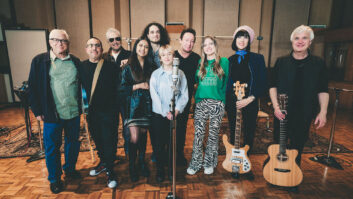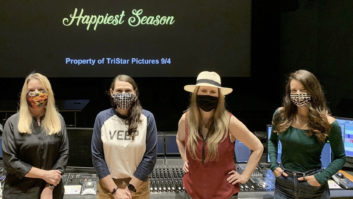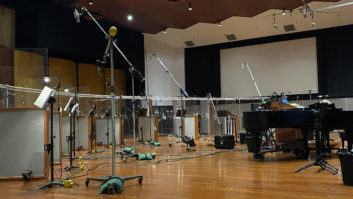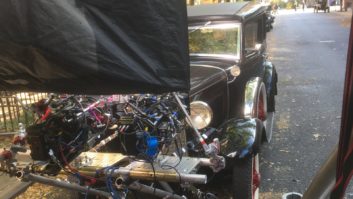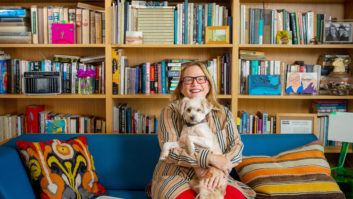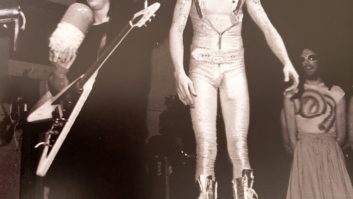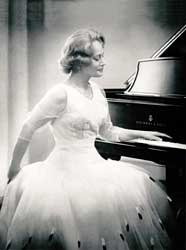
Imagine a musician who spent most of her childhood practicing her craft, then most of her adult life studying at a prestigious music conservatory under the guidance of a renowned music instructor. She toured the world, performing the masterworks of such composers as Franz Liszt, Johann Sebastian Bach, Ludwig van Beethoven and Fryderyk Chopin, with symphonies in Paris, London, Berlin and Boston to full houses and roaring applause. But that musician, although considered a master of her instrument, later received little public recognition, despite her talents and commitment. Her career received virtually no mention in music history books; her presence diminished. Because she is a woman, the professional music community treated her as an afterthought.
Hungarian-born Sari Biro (1910–1990) became the only woman to perform nine piano concertos in a series of three concerts at Carnegie Hall in 1949.
Fortunately, with the introduction of the CD in 1982, a number of scholars have gradually rediscovered early female composers and performers and made their works available to the public. One of the most recent and arguably one of the most ambitious endeavors to unearth these recordings comes from producer/historian/restoration engineers Victor and Marina Ledin, who teamed with classical label Naxos to release Volumes 1 and 2 of Women at the Piano: An Anthology of Historic Performances, which features a broad scope of female pianists from the first half of the 20th century — the recording industry’s formative years. Ultimately, the anthology will comprise a total of 10 discs, each containing at least 20 selections, all meticulously restored in the Ledins’ Pleasant Lane Studio in San Rafael, Calif.
Performances on the first two volumes date from the mid-1920s up through the mid-1950s, though the series will contain works dating as far back as the early 1900s. The Ledins developed the idea while serving as restoration producers for several piano compilations from Naxos’ historic collection in 2000, and over time, they assembled a database of more than 300 pioneering women pianists. At that point, they began the global hunt for rare recordings and nearly impossible-to-find biographical material.
“We wanted to document everything with background information,” says Marina Ledin. “What’s interesting, and sad in many respects, is we discovered that after the first 80 or 90 women, you can’t find birth dates, death dates, not even a footnote, yet these artists left a legacy. Some of them are living but you can’t find their biographical data. Googling doesn’t help; the Internet, libraries and other archives don’t yield much. Sometimes we’ll learn that a woman studied at a particular conservatory, but the trail goes cold if there is a name change.”
The Ledins began their research by poring through their own massive archives, which occupy three connecting storage facilities not far from their studio. Their collections include more than 10,000 illustrations, historic photos, concert programs, musical memorabilia and more than 25,000 music scores, as well as more than 100,000 classical recordings on cylinders, 78 rpm vinyl, transcription discs, LPs, CDs and tapes — in alphabetical order! — and thousands of broadcast transcription discs containing historic speeches, radio programs and news. “We’ve been collecting for quite a few years, finding items everywhere from garage sales and thrift stores to discarded library collections,” says Victor Ledin.
If the biographical digging is the most research-intensive part of the project, then the restoration process is equally aural-intensive. Because metal masters for this type of material are pretty much gone, the Ledins attempt to collect multiple copies of commercial 78s or acetate transcription discs. “In many cases, they’re extremely rare, especially from the pre-war period or WWII era, because a lot of record companies and factories were bombed and destroyed in Europe,” says Victor Ledin.

Victor and Marina Ledin in their Pleasant Lane Studio in San Rafael, Calif.
After gathering multiple copies of the source materials, they put them through a half-hour cleaning with one of Keith Monks’ record-cleaning machines. From there, the discs go onto a modified Technics SP-15 direct-drive turntable, with a custom electronic sensor that clocks accurate rpm readout. The Ledins listen to multiple copies, selecting the best-sounding one. Then they must also choose the appropriate styli configured to the exact groove on the record (and before 1950, there were no RIAA standards) and appropriate recording curve, which is accomplished with the Millennia Media LPE-2 archival playback equalizer (#44 out of 50 or so produced). “If you want accuracy, you have to dial it in,” says Victor Ledin. “The Millennia allowed us really infinite abilities to fine-tune what we’re listening to, and it’s phenomenal for extracting the best sound.”
Audio gets converted from the analog turntable via 24-bit dCS AD/DA format converters into a full CEDAR system, which runs on a dedicated Mac computer. With the powerful CEDAR system, the Ledins make a light pass to reduce clicks, ticks, pops and hiss, leaving mastering engineer Anthony Casuccio to handle the final cleanup.
For the Women at the Piano discs, the Ledins not only had to repair the ravages of time, but they also had to edit compositions split between two sides of a disc. For this job and additional editing, they moved the CEDAR files into their Sonic Solutions workstation. “On the 78 rpm recordings, performers would slow down or stop, knowing they were running out of space on one side,” says Marina Ledin. “Sometimes they’d even repeat a note. If you’re blindly editing the two sides, you might not hear the slowdown or a repeated note. We follow the score when we edit to make sure that we have a fluid, integral piece instead of just connections.” If it’s a live recording in the form of a transcription disc, she adds, then the musical overlap might be two or three bars! Therefore, it’s important to pay attention. “In 1937 at Boston Symphony Hall, you wouldn’t hear these side-joins, so we’re bringing these performances back the way they were actually performed.”
The Ledins use almost no external processing — it wouldn’t be true to the performance. A Weiss EQ1-MK2 24/96 EQ assists in fixing a few problems with the masters, and a Z-Systems z-8.8 Digital Detangler serves as a switchboard of sorts between the analog and digital equipment.
Before they burn the tracks onto a CD to hand off to Casuccio, the Ledins must make sure that all of the tracks flow together in terms of key signature, which determines the order of the compositions more than the date of composition, the country of origin or the performer. “Our human ear likes to have a progression of comfortable key changes,” says Marina Ledin. “We have to consider how the piece starts and ends and find a natural progression into the next piece of music. Considering we have a wide variety of music from different studios and different years, that’s the real jigsaw puzzle.”

Restoration mastering engineer Anthony Casuccio
EXTREME CLEANUP
Casuccio, a former San Francisco Bay Area resident who relocated to the New York area in 2003, took on the demanding job of restoration mastering for the project. “If you can compare what we did with the CEDAR system to sanding a piece of wood, then Anthony added the polish,” says Marina Ledin. His goal, like the Ledins’, was to draw out the original performance, “polish” it to the best of his ability and maintain continuity between the tracks.
Working at his Xtream Audio Mastering facility, complete with ample software such as Steinberg WaveLab 5 and Sony SoundForge 8, Casuccio first cleaned up the broadband noise left on the front and back of each track, then began work on the piano sounds. Despite the Ledins’ meticulous efforts to find the best-available source material, some transfers have not fared well over time. Some tracks require intense cleanup while others may be rejected altogether. One track, for example, still had a warble as the result of an irreparably warped 78. To remedy the problem, Casuccio used Antares Auto-Tune to steady the piano notes and to correct bits of wow or flutter in a composition’s final chord. “I found that by using some of these new applications not necessarily designed for restoration, I can actually fix a lot of the problems that we run into with the older recordings,” he says.
Casuccio often uses the TC Native EQ-G, which allows him to bring back the presence of the piano. “I do like the warm sound of this plug-in, especially on older 78 transfers,” he says. “It allows me to really hone in on a specific frequency.”
Casuccio’s Juilliard training proved beneficial during the editing process, when he would often place edits in a particular place that the Ledins had marked in the score. He also knew how much space to leave between each musical work. “We base this on the performance notations,” he explains.
The Ledins are wrapping up Volumes 3 and 4, but have come to an impasse concerning future compilations. Although they’ve “thrown the net” out to Washington D.C.’s National Museum of Women in the Arts, The Library of Congress, and many universities and music conservatories worldwide, they’re running low on biographical material for their female contributors. They hope that publicity from the first two discs will ferret out some of that information and generate awareness about the importance of historical archiving and restoration for all genres of music.
“Even libraries are disposing of their collections,” says Victor Ledin. “But every new generation of performers should have access to the musical treasures of the past because we can learn so much from history.”
Heather Johnson is a Mix contributing editor.
